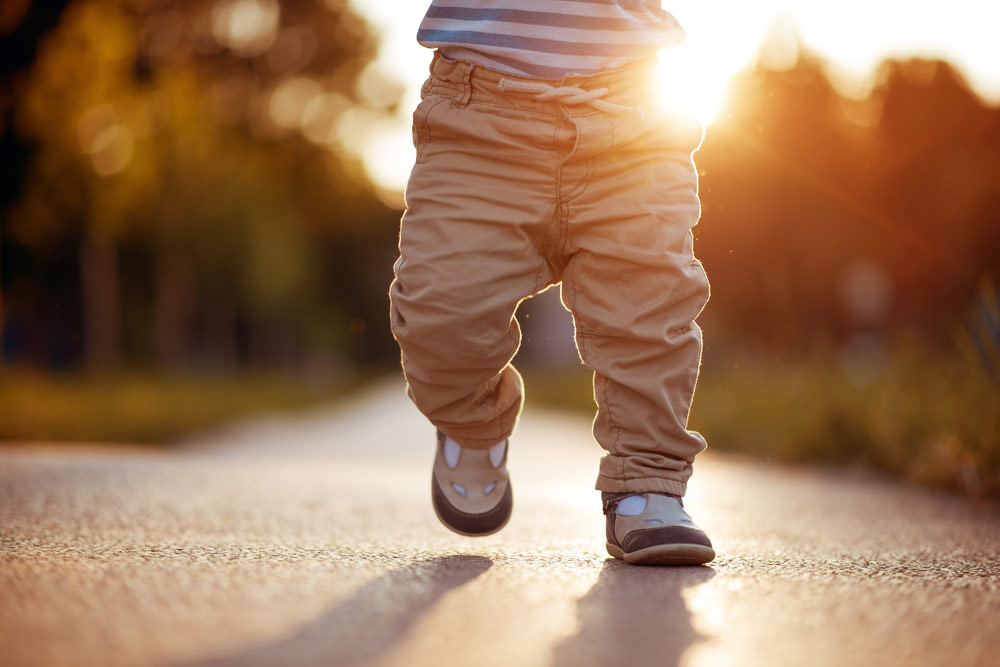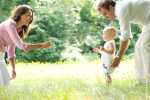Baby in motion - how to encourage crawling and walking
Written by Carly Tzanos and Lourdes Bruwer | Occupational Therapist
Tags: Gross MotorCrawling and WalkingGrowth and Development
Crawling and walking means you’re in the “jack-in-the-box” parenting phase where you feel as though you never get to sit down for more than a few seconds at a time! You are continually jumping up to move objects, rushing to cushion a bumped head, or going in search of a moaning little one who is stuck somewhere! So what’s the big idea behind crawling?
Occupational Therapist for Nubabi, Lourdes Bruwer, explains that crawling is one of the milestones with the most far-reaching effects on a wide variety of developmental areas. The process of learning to crawl and mastering this skill influences not just your baby’s gross motor abilities but also their sensory, cognitive, perceptual, speech and language, motor planning and fine motor abilities. Once your baby is up on all fours, gravity offers a whole new sensory experience for their little body, which provides their muscles, joints and tendons with a multitude of new sensations and information. They use this information to learn where their body parts are in relation to each other, as well as to the ground. Carly Tzanos, Occupational Therapist, adds that the benefit from developing this body sense will impact school related tasks, such as writing or cutting.
One of the most significant benefits gained from sufficient crawling is the development of physical stability needed for fine motor skills. Stability, specifically in the shoulder girdle, is developed while your baby learns to rock, shift weight and move in a crawling position. This stability in the shoulder allows him to be able to move his lower arms and hands freely while the shoulder is held still.
Another benefit of crawling is the development of vision and perception. While learning to negotiate small spaces your baby will discover the scope as well as the restrictions of his physical environment. Lourdes explains that although a baby is far away from holding a pencil and spacing letters on a line, they are cleverly mastering the foundations of this complex academic task. As the left and right sides of his body work together in crawling, their brain is also making connections between the left and right sides. For many multifaceted tasks (e.g. eye-hand coordination, speech and language development, reading skills, etc.) some components are controlled by the right side of the brain while others, are controlled by the left. The two sides of the brain need to be able to communicate well for efficient performance in these areas.
Lourdes and Carly remind us that the start of crawling is “tummy time”. A few minutes at a time is all it takes to get started.

Tips for Tummy Time Fun
Try placing your baby;
- on their tummy over your legs (while you sit on a chair/floor), you can gently rock them in this position, place a stack of blocks for them to bash over at this eye level or call their attention to watch a pet/sibling
- on your chest while you recline (you can gradually increase the angle as they get used to this position), sing some songs or have a little “chat”
- over a large exercise ball, start off by moving the ball very gently from side to side and as they get used to the movement you can try back and forth as well as making the movement bigger. Placing a hand on their back will help them feel safe in this position and make sure they have something to look at on the floor/against the wall (e.g. a mirror, book, family member, toy they can grab etc.)
- on the arm of a couch so you can “chat” with your face at their height. Try singing nursery rhymes or playing with puppets.
There are many types of crawling but the most beneficial way is to encourage your baby to crawl on all fours (i.e. on their hands and knees) says Lourdes. This type of “traditional” crawling helps to strengthen shoulder girdle stability, develop the arches of the hands, bilateral control (the use of the two sides of the body together), sensory systems, dynamic balance, hip and neck development as well as learning to move their arms and legs independently. Progress and maturity of these areas of development form the basis for tasks such as sitting at a desk, writing, cutting, drawing, being able to tie shoelaces, writing from the left to the right side of the page and motor planning (being able to plan and execute purposeful movement).
Although most parents are anxious for their babies to start walking soon after they start crawling, try not to be in too much of a hurry for crawling to stop. Carly encourages parents to get down on their level with them because time spent cementing this skill is well worth it when you remember all the amazing areas crawling impacts for life long learning.
As your little explorer gets more adept at motoring around on all fours they will start to get curious about what else their environment has to offer! They will start to pull up on anything and everything as they starts to work on developing their standing balance in preparation for walking.

Tips to help your baby master walking
- allow them to pull up on couches, tables, your legs etc. by themselves. Their muscles need the practice of all these transitional movements to assist them with balancing while walking (you can place their favorite toy on the coffee table or a new item to explore on the couch to motivate them to pull up)
- if they fall, try to cushion their head with your hands or “catch” them before their body lands on the floor, but allow them to experience the feeling of falling (make sure your reaction is lighthearted after a fall, they will take their cue from you and you want them to feel confident to try again), experiencing falling will help their body in future to “brace” against the fall and anticipate the fall before it happens making vital subtle postural adjustments to aid balance
- play games that allow them to stand against a low table and shift their weight from one foot to the other (e.g. place blocks to their right on the table and a container to put them into on their left, you can also use pegs and a paper plate, puzzle pieces or snack options spread out along the table)
- offer them only as much support in walking as they need (it may be 2 hands in the beginning, then one hand, then one finger and even just a piece of ribbon or string in the last stages before they are confident to roam around on their own)
- continue to encourage them to crawl (you may need to crawl around with them) as the strengthening of the core muscles during crawling will help with the dynamic balance needed for walking (obstacle courses going under a table, along a masking taped line on the floor, over a chair, around a box etc. are great for motivating prolonged crawling)
- find objects for your baby to push around to assist with their balance as they are learning to walk unassisted (e.g. push teddy in a box, push the laundry basket to the washing machine for Mom, push a kiddies chair down the passageway)
Lastly, remember that whatever big motor milestone your baby is working on, remember to spend time cementing that milestone before moving to the next. Try not to compare your baby with others as there may be many mini milestones they are very busy mastering before they move onto the more obvious motor ones you are anticipating!”
Share this
- 0
- 0
Related Posts
Have you tried the Nubabi Free Trial?
Get unlimited access to Your Parenting Toolkit for 2 weeks for free!
Track, Boost, Explore and Capture your child's growth and development.
Available on both mobile and web.





